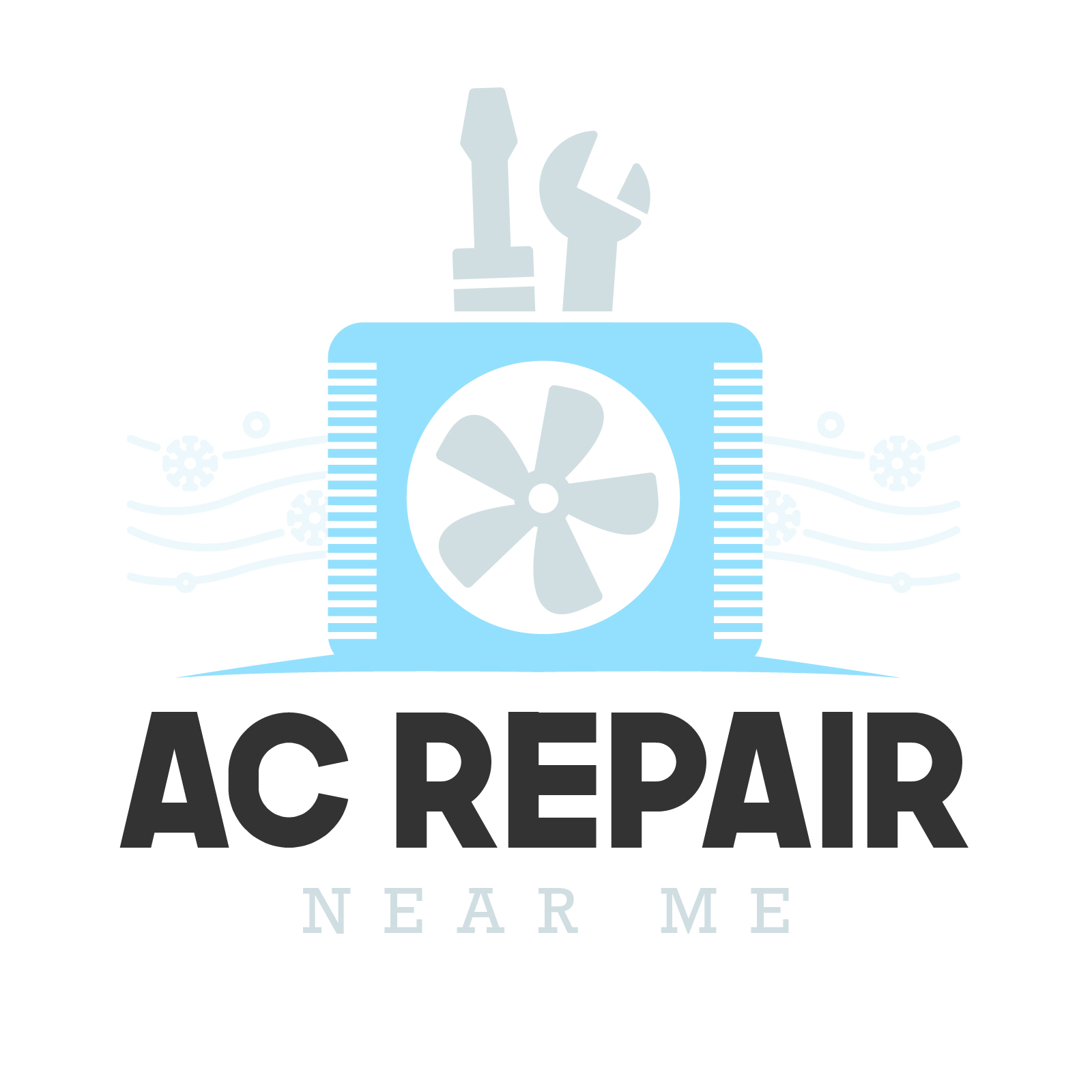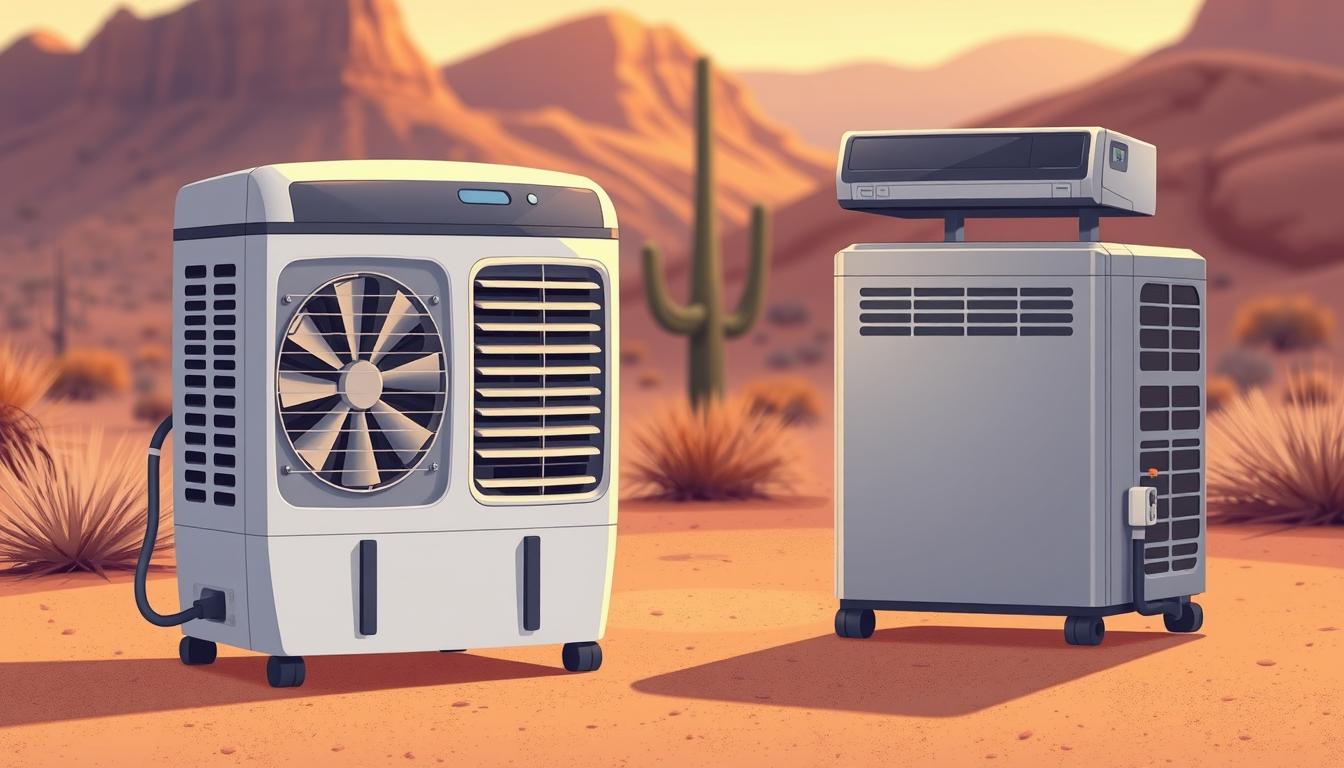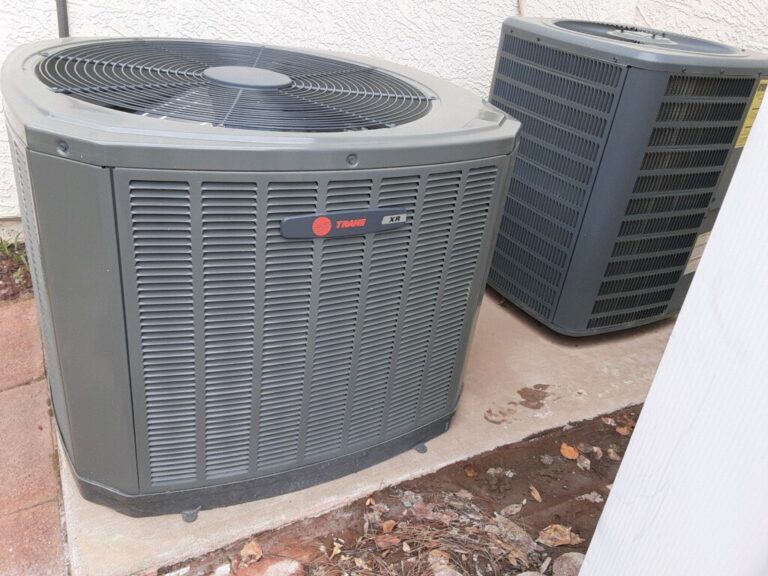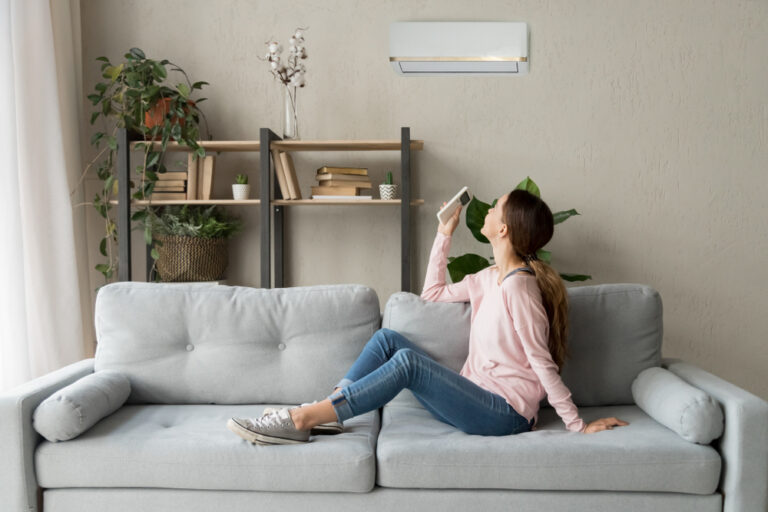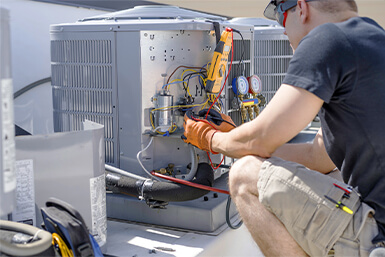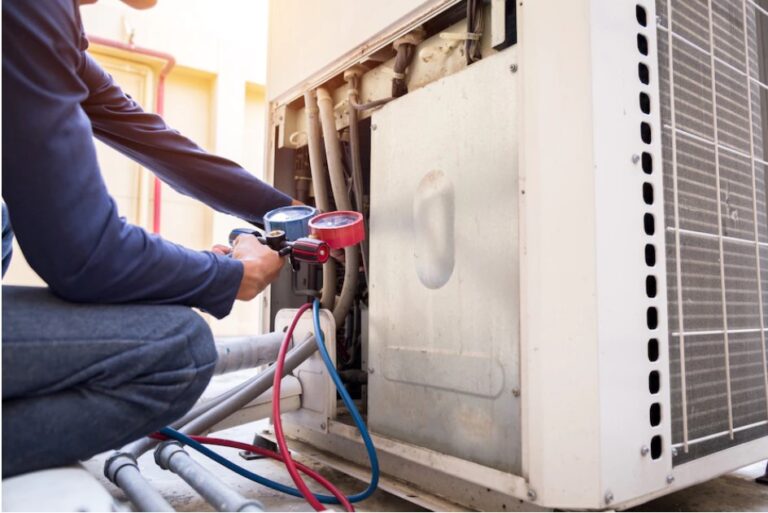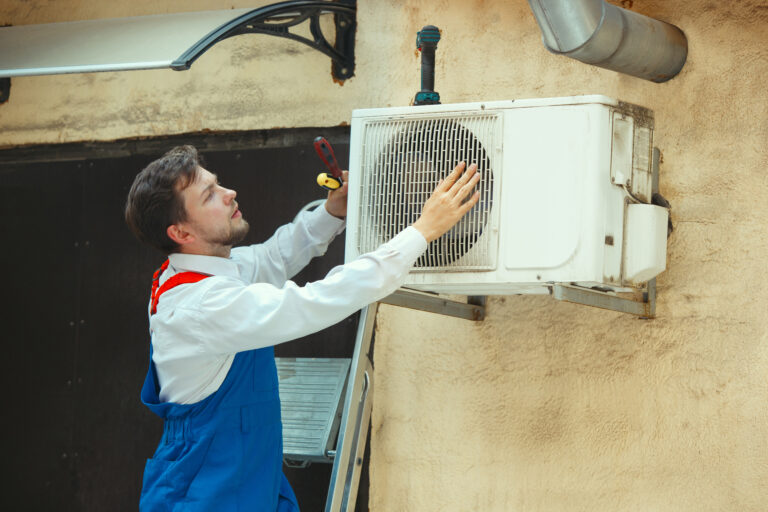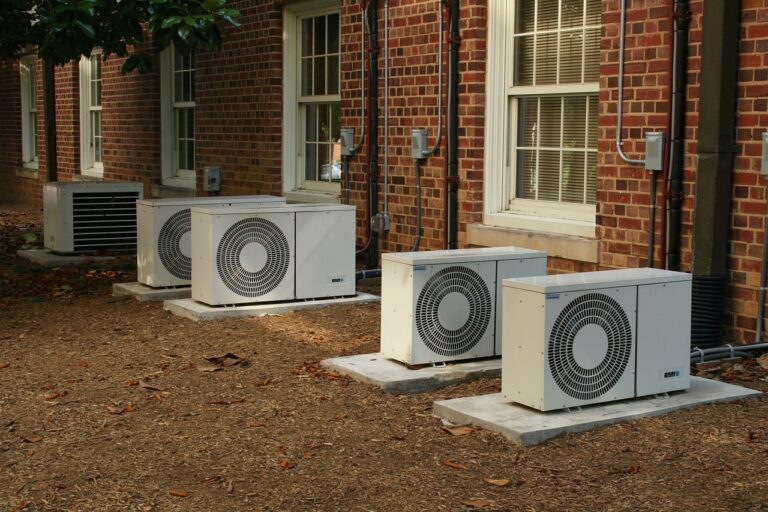Evaporative Coolers vs AC Units in Arizona: Which Is Better?
Arizona’s desert climate presents a significant cooling challenge for homeowners, with extremely high temperatures being a norm during the summer months.
Choosing the right air cooling system is crucial due to the state’s unique climate conditions. The decision between using evaporative coolers and traditional air conditioning depends on several factors.
Understanding the differences between these two systems in terms of efficiency, cost, performance, and environmental impact is essential for making an informed decision.
The best choice between evaporative coolers and AC units depends on specific home conditions, budget considerations, and personal preferences.
Key Takeaways
- Understanding the local climate is crucial for choosing the right cooling system.
- Evaporative coolers and AC units have different operating mechanisms and efficiencies.
- The choice between the two systems depends on various factors including cost and performance.
- Both systems have their advantages and can be suitable for Arizona homes.
- It’s essential to consider environmental impact when deciding on a cooling system.
Understanding Cooling Options in Arizona’s Climate
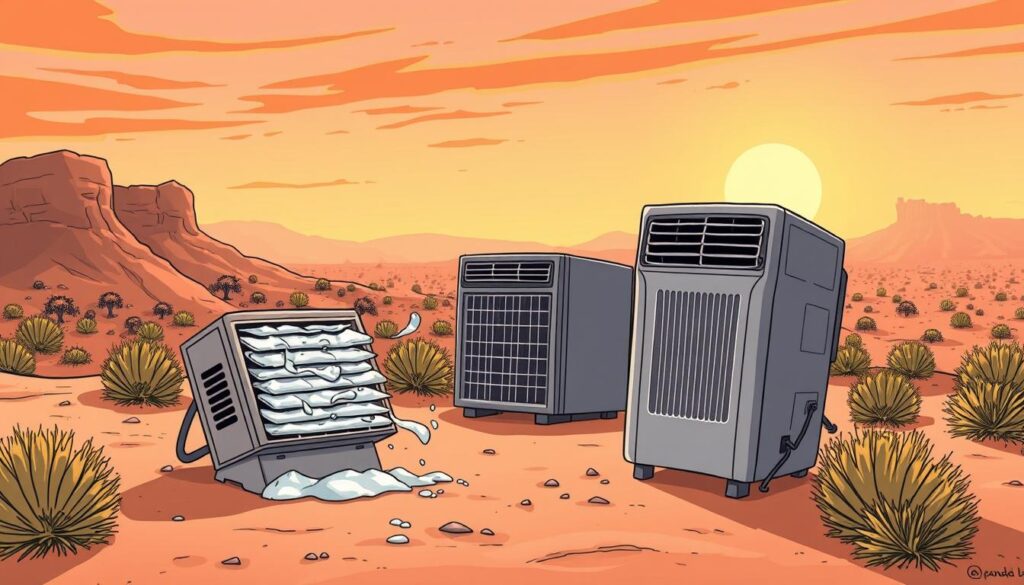
The desert climate of Arizona poses distinct challenges for maintaining comfortable indoor temperatures. With summer temperatures often exceeding 100°F and low humidity levels, especially in desert regions, the need for effective cooling solutions is paramount.
Arizona’s Unique Climate Challenges
Arizona’s climate is characterized by hot, dry conditions that create unique cooling challenges. The state’s low humidity levels, particularly in desert areas, affect how cooling systems perform. Some key challenges include:
- Extreme temperature fluctuations
- Low humidity levels that impact cooling system effectiveness
- The need for cooling solutions that can handle prolonged heatwaves
The Importance of Choosing the Right Cooling System
Choosing the right cooling system is crucial not only for comfort but also for energy efficiency and cost management. In Arizona’s long, hot seasons, an effective cooling system can significantly impact quality of life. Different cooling technologies, such as evaporative cooling and air conditioners, offer varying benefits depending on the specific climate conditions.
Understanding how different cooling systems interact with Arizona’s climate is essential before making a purchase decision. Factors such as the system’s ability to handle low humidity and extreme temperatures should be considered to ensure optimal performance and efficiency.
How Evaporative Coolers and AC Units Work
The choice between evaporative coolers and AC units hinges on their fundamental cooling processes. To make an informed decision, it’s crucial to understand how each system works.
The Evaporation Process in Swamp Coolers
Evaporative coolers, also known as swamp coolers, operate on the principle of water evaporation to cool the air. They pull hot air through water-saturated pads, causing the water to evaporate and cool the air. This process not only cools the air but also adds moisture to it.
The evaporation process involves several key components: a water reservoir, pump, cooling pads, and a fan system. The pump circulates water from the reservoir to the cooling pads, which are kept saturated. As hot air is drawn through these pads by the fan, the water evaporates, cooling the air. This cooled air is then circulated throughout the home.
Evaporative cooling is a natural and energy-efficient process. It uses significantly less electricity than traditional air conditioning systems because it doesn’t rely on refrigerants or complex machinery. However, its effectiveness depends on the humidity levels; it works best in dry conditions.
The Refrigeration Cycle in Air Conditioners
Air conditioners, on the other hand, use a refrigeration cycle to cool the air. This cycle involves four main phases: compression, condensation, expansion, and evaporation. In the compression phase, the refrigerant is compressed, raising its temperature and pressure. The hot refrigerant gas then condenses into a liquid in the condenser coils, releasing heat outside. The liquid refrigerant passes through an expansion valve, which reduces its pressure and allows it to expand. Finally, it evaporates in the evaporator coils, absorbing heat from the indoor air and cooling it.
Air conditioners not only cool the air but also remove humidity, making them effective in a wider range of humidity conditions compared to evaporative coolers. However, they consume more energy due to the complex machinery involved.
| Characteristics | Evaporative Coolers | Air Conditioners |
|---|---|---|
| Cooling Mechanism | Water Evaporation | Refrigeration Cycle |
| Effect on Humidity | Adds Moisture | Removes Humidity |
| Energy Consumption | Low | High |
Evaporative Cooler vs AC: Performance in Arizona
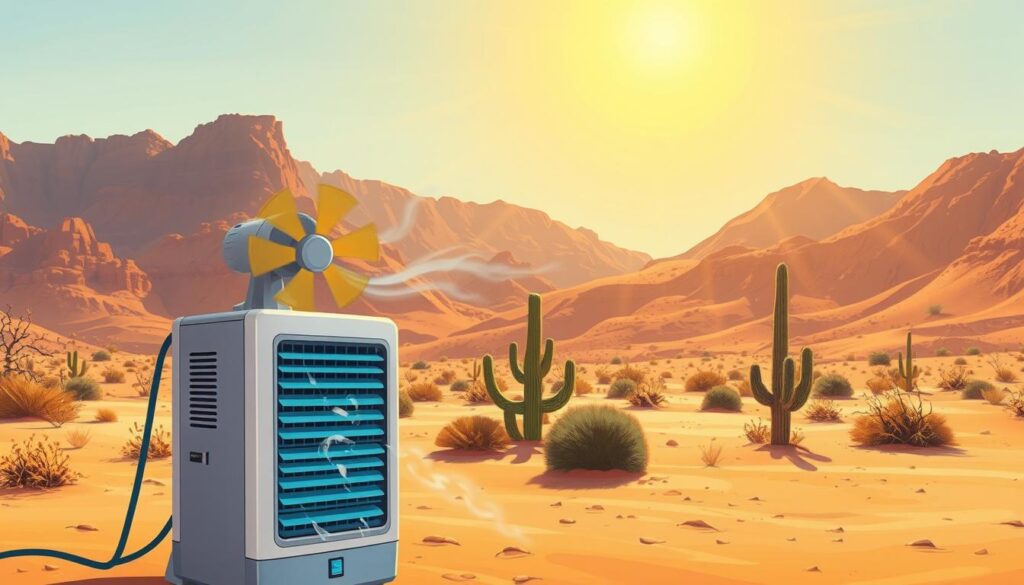
Arizona residents often face the dilemma of choosing between evaporative coolers and air conditioners for their cooling needs. The performance of these systems in Arizona’s unique climate is a crucial factor in this decision.
Cooling Effectiveness in Dry Desert Conditions
Evaporative coolers, also known as swamp coolers, are particularly effective in Arizona’s dry desert conditions. They can achieve significant temperature drops of 15-40°F when humidity levels are below 30%. This makes them an attractive option for areas like Phoenix, where the dry climate allows them to operate efficiently. In regions with slightly higher humidity, their effectiveness may vary, but they still offer a viable cooling solution.
The cooling capacity of swamp coolers is directly related to the dryness of the air. In drier areas, they can provide substantial cooling, while in more humid regions, their performance is somewhat diminished. Nonetheless, they remain a popular choice due to their energy efficiency and ability to introduce fresh air into homes.
Humidity Considerations for Both Systems
One of the key differences between evaporative coolers and air conditioners is how they handle humidity. Evaporative coolers add moisture to the air as they cool, which can be beneficial in Arizona’s arid climate. However, during the monsoon season when humidity levels rise, their effectiveness is reduced. Air conditioners, on the other hand, provide consistent cooling regardless of outside humidity levels but do not add moisture to the air.
The added humidity from evaporative coolers can enhance comfort in very dry conditions by preventing the dryness that can irritate respiratory systems. However, it’s crucial to monitor humidity levels to avoid excessive moisture, which can lead to discomfort and other issues.
Temperature Control and Comfort Levels
Temperature control differs significantly between the two systems. Air conditioners offer precise digital control, allowing homeowners to maintain exact temperature settings. Evaporative coolers provide more general cooling and can be less precise in their temperature control. However, they offer the advantage of introducing fresh air into the home, which can improve air quality and comfort.
The choice between evaporative coolers and air conditioners in Arizona ultimately depends on various factors, including the specific climate conditions of the area, personal comfort preferences, and the importance of precise temperature control. By understanding the performance characteristics of each system, homeowners can make an informed decision that best suits their needs.
Cost Comparison: Installation, Operation, and Maintenance
Arizona homeowners face a critical decision when selecting between evaporative coolers and air conditioners, with cost being a primary factor. The total cost of ownership for these cooling systems encompasses not only the initial purchase and installation but also ongoing expenses such as energy consumption and maintenance.
Initial Purchase and Installation Expenses
The initial investment for evaporative coolers and air conditioners varies significantly. Evaporative coolers typically cost between $500 and $2,000 installed, while central air conditioning systems range from $3,000 to $7,000 or more. The cost of installation can also differ based on the complexity of the setup and the specific requirements of the home.
For instance, evaporative coolers are generally less expensive to install, especially in dry climates where they are most effective. In contrast, air conditioners require more complex installations, including refrigerant handling and ductwork, which can increase upfront costs.
Energy Consumption and Monthly Bills
Operating costs show even greater differences between the two systems. Evaporative coolers use approximately 75% less electricity than traditional air conditioners, leading to significant savings on monthly utility bills during Arizona’s hot summer months. However, it’s essential to consider the water usage costs associated with evaporative coolers, as they can add to the overall expense.
A comparison of the monthly energy bills for both systems reveals that evaporative coolers offer substantial savings, particularly for homes in dry climates. This makes them an attractive option for homeowners looking to reduce their energy expenses.
Long-term Maintenance Requirements
Both evaporative coolers and air conditioners require regular maintenance to ensure optimal performance and longevity. Evaporative coolers need more frequent maintenance, including pad replacements and cleaning, but at a lower cost per service. Air conditioners, while requiring less frequent maintenance, often involve more expensive repairs and refrigerant recharging.
When considering the long-term costs, it’s crucial to factor in the expected lifespan of each system in Arizona’s harsh climate. A comprehensive 10-year cost of ownership comparison should include purchase, installation, operation, and maintenance expenses to provide a clear picture of which system is more cost-effective in the long run.
Environmental and Health Considerations
The choice between evaporative coolers and air conditioners in Arizona involves more than just cooling effectiveness; it also encompasses environmental and health considerations. Both systems have distinct impacts on the environment and indoor air quality, which are crucial for homeowners to understand.
Energy Efficiency and Environmental Impact
Evaporative coolers are significantly more energy-efficient than traditional air conditioners, using less electricity and resulting in a smaller carbon footprint. They also don’t use refrigerants, which can be harmful to the environment. However, their water consumption is a consideration, especially in dry climates. A comparison of the energy efficiency ratings and carbon footprints of both systems reveals that evaporative coolers are generally more environmentally friendly.
- Evaporative coolers use up to 75% less energy than air conditioners.
- The absence of refrigerants in evaporative coolers reduces their environmental impact.
Air Quality and Freshness
Evaporative coolers introduce fresh air into homes and add moisture, which can help alleviate dry skin and respiratory issues common in Arizona’s dry climate. However, they require regular maintenance to prevent mold growth. In contrast, air conditioners recirculate indoor air and can potentially reduce air quality if not properly maintained.
- Evaporative coolers can improve indoor air quality by introducing fresh air.
- Regular cleaning of evaporative coolers is necessary to prevent mold and bacteria growth.
Health Effects of Humidity Levels
The humidity control offered by evaporative coolers can have significant health benefits in Arizona’s arid environment. Proper humidification can help with respiratory comfort and skin health. However, excessive humidity can lead to other issues, making it crucial to maintain optimal humidity levels.
In conclusion, both evaporative coolers and air conditioners have their environmental and health implications. By understanding these factors, Arizona homeowners can make informed decisions that balance their cooling needs with environmental sustainability and health considerations.
Making the Right Choice for Your Arizona Home
Choosing the right cooling system for your Arizona home can be a daunting task, but by understanding the differences between evaporative coolers and AC units, you can make an informed decision.
The key differences between evaporative coolers and air conditioners lie in their operating principles, energy efficiency, and suitability for Arizona’s climate. Evaporative coolers, also known as swamp coolers, use water to cool the air through evaporation, making them ideal for dry areas with good ventilation.
In contrast, air conditioners use refrigerants to cool the air, making them more suitable for sealed homes and areas with high humidity. To make the right choice, consider your home’s size, location, and your budget. For large, open spaces in very dry areas, evaporative coolers are often the better choice. However, for sealed homes or areas with monsoon humidity, traditional air conditioning may be worth the higher cost.
A hybrid cooling solution that combines both technologies can also be an option for optimal efficiency. Regardless of the system you choose, regular maintenance is crucial to maximize efficiency and prolong its lifespan.
By considering your specific needs and circumstances, you can make a well-informed decision that balances comfort, energy efficiency, and cost.
